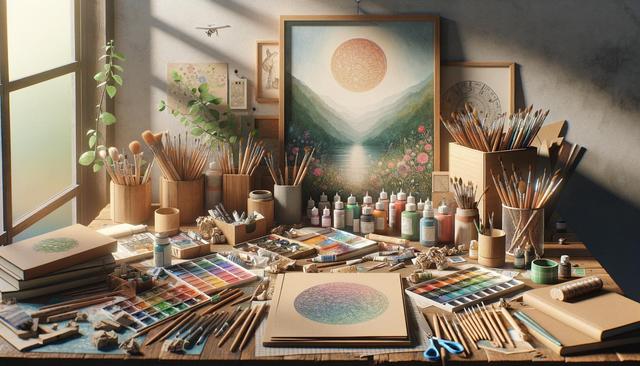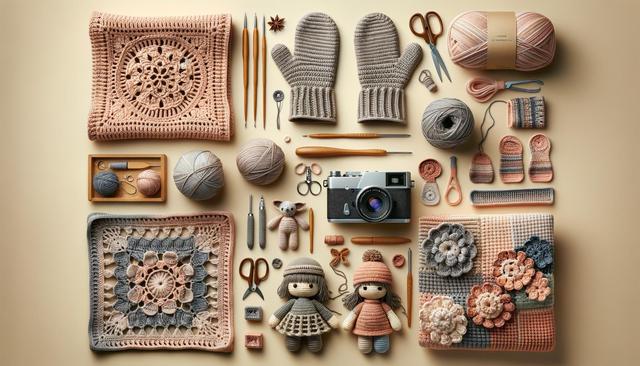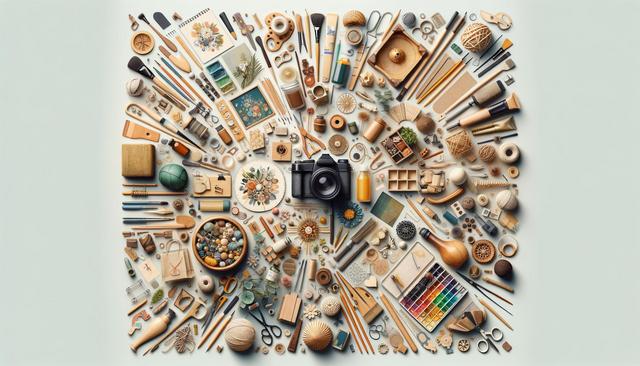Exploring the Benefits of Using Recycled Materials in Art Projects
Exploring the artistic potential of recycled materials can lead to unique and inspiring creations while benefiting the environment.

Unlocking Creativity with Recycled Art Supplies
Art supplies have long been the foundation of creative expression, but their environmental impact often goes unnoticed. By integrating recycled materials into art projects, artists not only contribute to environmental sustainability but also unlock a realm of creativity that challenges traditional conventions. Recycled art supplies can include anything from old magazines and newspapers to discarded fabric scraps, plastic bottles, and more. These materials not only reduce waste but also provide unique textures and forms that traditional art supplies may not offer. Embracing these unconventional resources encourages artists to think outside the box, inspiring innovative techniques and unexpected outcomes in their work.
The Environmental Impact of Traditional Art Supplies
Traditional art supplies, while essential to many creative pursuits, often come with a considerable environmental cost. Many paints, for instance, contain chemicals that can be harmful to the environment if not disposed of properly. Similarly, the production of canvas and paper can lead to deforestation and significant water usage. By opting for recycled materials, artists can mitigate some of these impacts. Instead of purchasing new canvas, an artist might use old cardboard as a base for their work, or turn to recycled paper for sketching and drawing. This not only conserves natural resources but also reduces the demand for new products, aligning artistic endeavors with ecological mindfulness.
Embracing the Challenge: Creating with Constraints
One of the most intriguing aspects of using recycled materials in art is the challenge it presents. Artists must learn to work with what is available, which can lead to surprising and delightful results. This constraint can foster a sense of ingenuity and adaptability, as artists must figure out how to manipulate materials that are not traditionally used for art-making. For instance, a plastic bottle can be transformed into a sculpture, or old textiles can be repurposed into a fabric collage. This process not only enhances creative problem-solving skills but also encourages a mindset of resourcefulness, which can be applied to other areas of life.
Recycled Materials: A Canvas for Storytelling
Every recycled material carries with it a history, and incorporating these elements into art projects can add layers of meaning and narrative to the work. An artist might use pieces of a worn-out map to create a collage that speaks to themes of travel and exploration. Alternatively, using old photographs in a new artwork can evoke nostalgia or comment on the passage of time. By integrating these elements, artists can create pieces that not only capture the eye but also engage the mind, inviting viewers to ponder the stories behind the materials. This method of storytelling through recycled art can resonate deeply with audiences, making the art both visually and intellectually compelling.
Conclusion: The Future of Art and Sustainability
In conclusion, using recycled materials in art projects offers numerous benefits that extend beyond environmental sustainability. It challenges artists to innovate, fosters a sense of resourcefulness, and provides a platform for storytelling. As awareness of environmental issues grows, the integration of recycled materials in art becomes increasingly relevant. Artists who embrace this practice not only contribute to a more sustainable future but also enrich their creative processes. By choosing recycled materials, artists become part of a larger movement that values creativity, innovation, and environmental stewardship. This approach not only transforms art-making but also inspires others to consider the possibilities of sustainability in their own creative endeavors.





